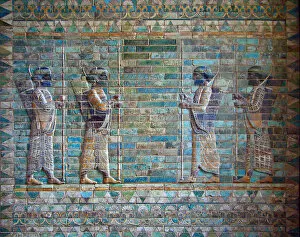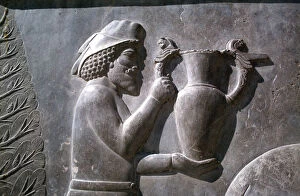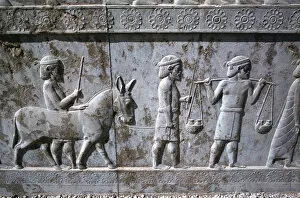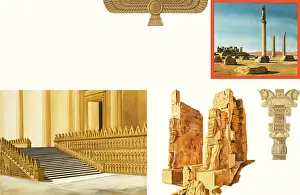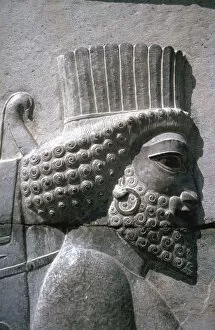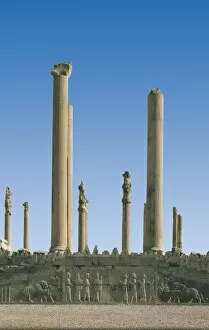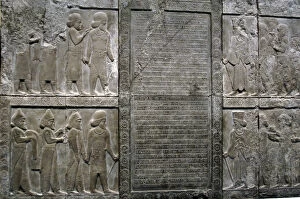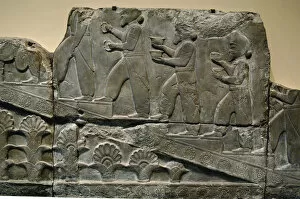Apadana Collection
The Apadana, also known as the Palace of a Hundred Columns, stands proudly in the foreground with its magnificent architecture and rich history
All Professionally Made to Order for Quick Shipping
The Apadana, also known as the Palace of a Hundred Columns, stands proudly in the foreground with its magnificent architecture and rich history. Located in Persepolis, Iran, this UNESCO World Heritage Site is a testament to the grandeur and sophistication of ancient Persian civilization. Carved reliefs of palace guards adorn the walls, showcasing their strength and loyalty. These intricate designs reflect the artistic prowess of Assyrian Art during that era. Dating back 2, 500 years to Darius I's reign, these ruins hold stories from a bygone era. They serve as a reminder of the power and opulence that once resided within these walls. One such relic is the Archers frieze from Darius I's palace at Susa. Created around 510-500 BC by an Assyrian artist, it depicts skilled archers in action - a tribute to Persia's military might. Another captivating relief found here portrays Sogdians - traders who played a significant role in ancient Persia's commerce network. Their presence highlights Persepolis' cosmopolitan nature and its importance as an economic hub. A striking scene unfolds on another relief: a bull fiercely attacked by a lion. This symbolic depiction represents power struggles between different civilizations during that time period. As we explore further into this mighty city of Persepolis (Takht-e-Jamshid), we encounter more remnants of greatness. The Apadana Palace or Audience Hall was where Darius I held court with foreign dignitaries and showcased his authority over vast territories. The Palace of Darius I itself stands tall as an architectural marvel from the 6th century BC. Its regal design reflects Persian ingenuity and craftsmanship at its finest. Persepolis exudes historical significance; it was once one of the greatest cities in antiquity. Today, visitors can witness firsthand how this majestic site has stood against time while marveling at the Apadana's grandeur.




